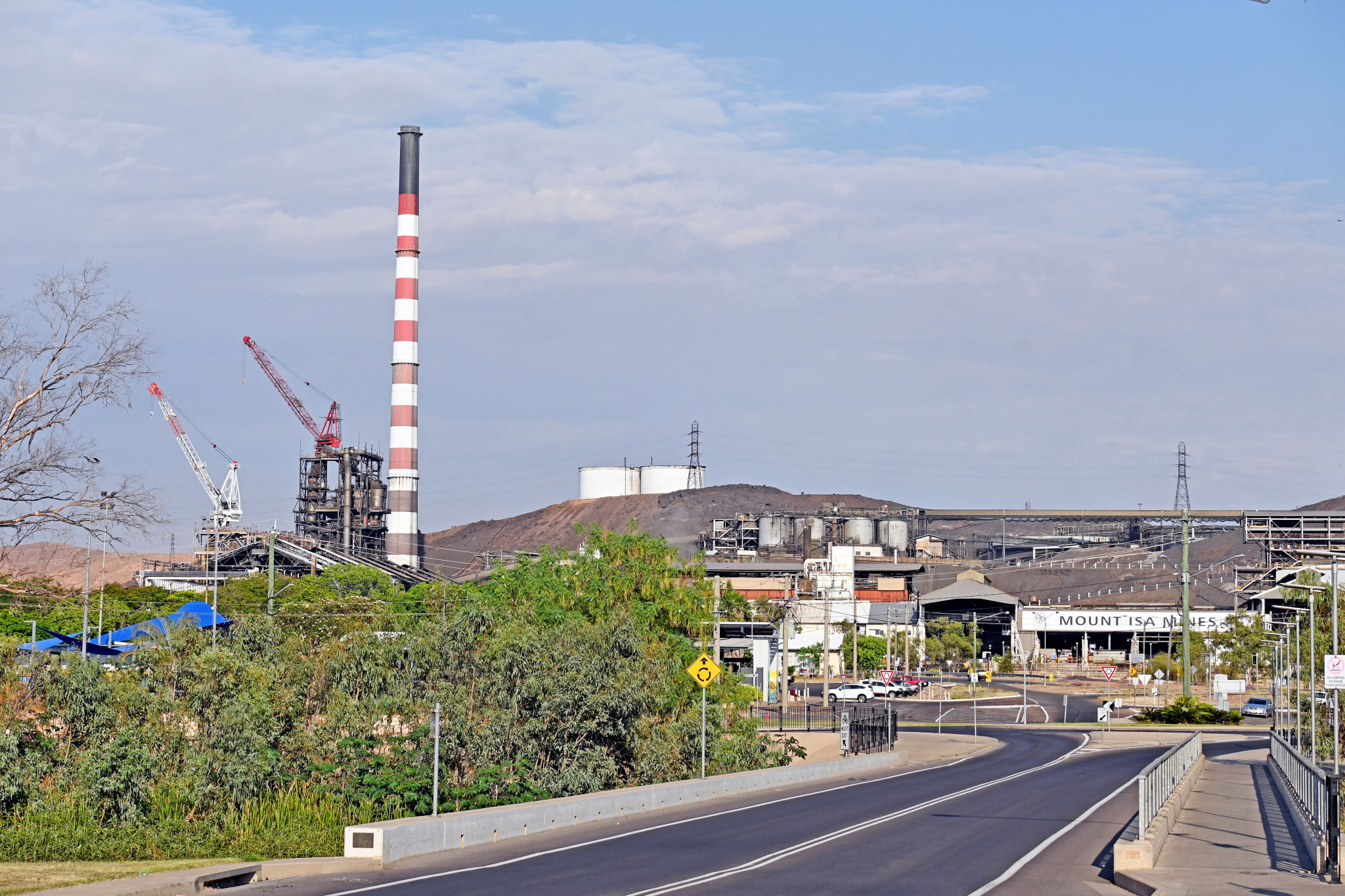Business
17 October, 2025
Smelter's long-term future is far from secure, says Glencore
Despite a $600 million support package, the future of the smelter is far from secure.

The global market will determine the long-term future of Mount Isa’s copper smelter, Glencore says.
Speaking after last week’s $600 million decision that will see the state and federal governments provide funding to prop up the Mount Isa facility, as well as the Townsville refinery, Glencore’s head of corporate affairs, Cass McCarthy, said any decision beyond 2028 would be determined by factors outside of Australia.
“We've signed a heads of agreement and knowing what we know now, that is that we will continue to operate the smelter out to 2028,” she said.
“There's a whole bunch of different factors, as you know.
“We don't sit in isolation, we're part of a global market. So that is also in part what has led us to this dilemma, where you've got other countries like China or the US really acting quite aggressively to secure their share of a global copper smelting market.
“And from a purely economic point of view, we have been absorbing losses for the copper smelter because of those change dynamics in the global market.
“We've been working with the Queensland and federal governments to come up with a three-year package which gives us time to see what happens in the market over that period and to continue to work on a long-term solution.”
Ms McCarthy said the $600 million came with a “number of components”.
“So that funding, you have review points,” she said.
“Like any complex kind of support package, you would have proper governance. There are payments of it's up to $200 million per annum if we meet all of those review points.
“While we're continuing to work on that, we're looking at a transformation study. We'll be making capital investments into upgrading the facilities as well, because remember, we're moving from a smelter that was just treating our copper concentrate.
"Now that MICO has closed, we're relying on a lot of third parties, so we need to make some capital investments to ensure that it works.”
With uncertainty over the future of Phosphate Hill – and in turn the acid plant that allows Glencore to continue to operate the copper smelter because it no longer has sulphur emissions – Ms McCarthy said the transformation study would look at alternative options in case Dyno Nobel shut its operations.
“I think one of the reasons why we're doing the transformation study is that it may help us to assist in looking at different avenues so that we can, if that scenario eventuates, have other options,” she said.
“But (the potential Phosphate Hill closure) is a concern for us.
“I'm optimistic that we'll be able to find a solution. I can't talk to what (Dyno Nobel) may or may not do, but certainly there is a co-dependency there between our copper smelter and (Dyno Nobel).
“I don't have a crystal ball, but what I would say is that the transformation study that we're looking at may identify other options that could address that issue.”
Glencore also defended itself against questions that the $600 million was just the first part of what could be long-term funding support.
“We don't see it like that at all. This isn't a problem unique to Glencore. There is a lot of global volatility in the market,” Ms McCarthy said.
“As I mentioned, you've seen China; you're now seeing the US taking steps to preserve that industrial capacity. We've already absorbed significant financial losses with the smelter.
“There's 600 jobs, 600 families. That weighs very heavily on our mind when we're making decisions.
“But from a purely economic basis, we could have closed the smelter to avoid these financial losses.
“But we recognise that this smelter is unique. It treats third-party concentrate.
“It preserves smelting and metals processing capacity in Australia, which is going to be critical for the future. Copper is a critical mineral. It's going to be used in a lot of applications for decarbonisation and the Queensland and federal governments recognise that as well.
“So, it was logical for us to work together. We don't see it as a bailout package; we see it as the first step of working together on a longer term solution.”
The next challenge for Glenore will be securing enough copper to feed the smelter, with the closure of MICO and projects like Harmony’s Eva mine still years away from production.
“As you know, Glencore not only has a lot of industrial assets, we have an excellent marketing division,” Ms McCarthy said.
“They're working very, very hard to secure as much copper concentrate as they can.
“There is a shortage, so we've been playing our role in terms of securing as much copper concentrate as we can from mines like Ernest Henry.
“We work with BHP and certainly others in the region.
“I think what we've also said is that the Queensland government has a role to play in ensuring that those copper mine projects or the slated copper projects in Queensland get fast-tracked so that that concentrate becomes available.”
The Black Star open cut mine feasibility study is “progressing quite well”, according to the miner.
“We're pretty enthusiastic about that process,” Ms McCarthy said.
“It's got to go through all the normal governance and investor committee pieces as well, but we know that everyone in Queensland and certainly on site are very anxious and want to know about whether that project's going ahead.
“We are very optimistic about it and we'll continue progressing those studies through.”